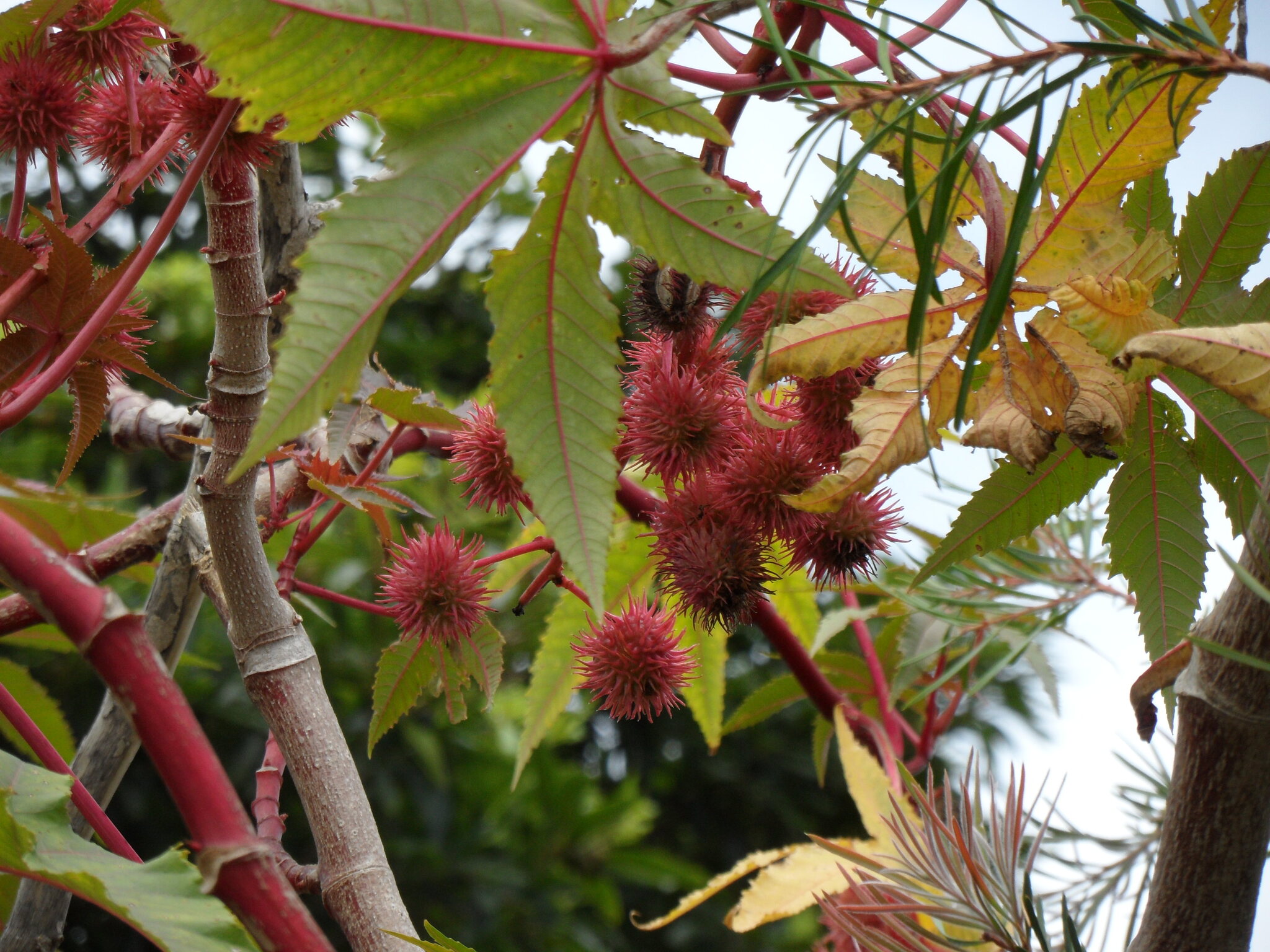
Fast growing shrub sometimes grown as a summer annual in cooler districts where it does not survive well. Leaves peltate, palmately 7-9-lobed, shiny, bronzish at first and becoming green except in purple-leaved cultivars, margins toothed; stipules variable, often gland-like. Flowers in woolly male and female clusters. Fruit roundish, 3- lobed, forming prickly seed cases of 3 2-valved fruitlets; seeds ornamented and colourful but poisonous to humans and stock.
The leaves of most garden plants retain bronze colouration. This purple-leaved clone is a cultivar of uncertain name and origin.
Seeds contain ricin, one of the most toxic naturally occurring substances. Ricin is released when the seed coat is broken; 2-6 chewed beans would be fatal.
Africa to Asia.
Source: (2002). Euphorbiaceae. In: . Horticultural Flora of South-eastern Australia. Volume 3. Flowering plants. Dicotyledons. Part 2. The identification of garden and cultivated plants. University of New South Wales Press.
